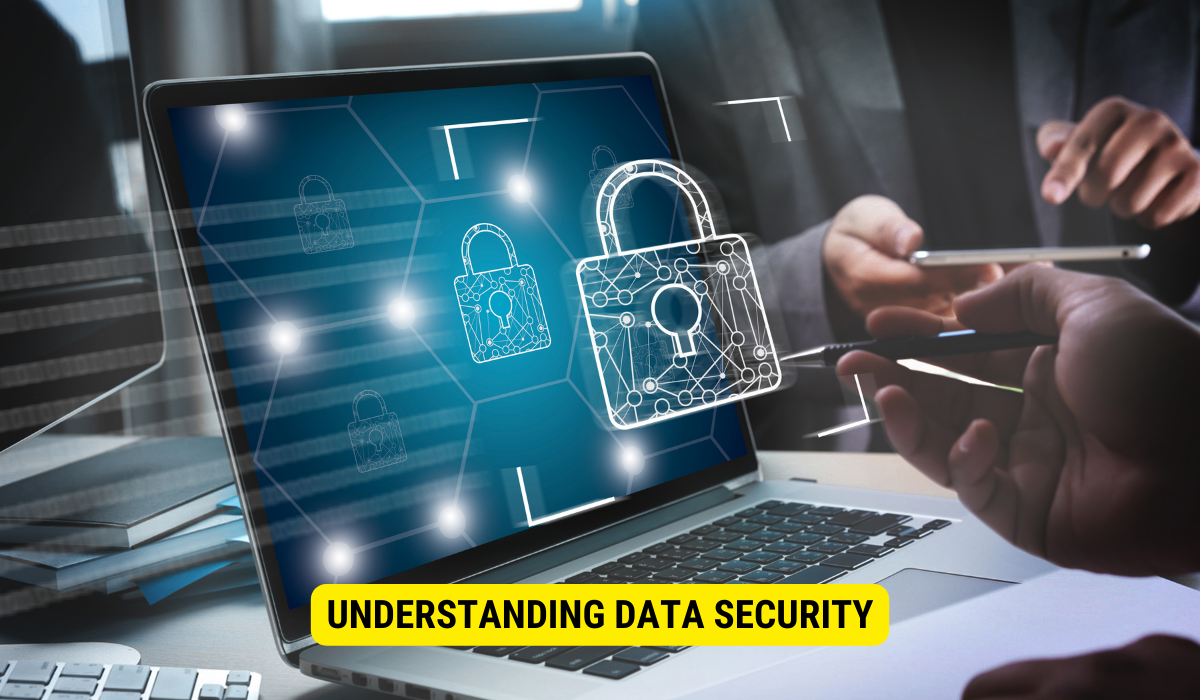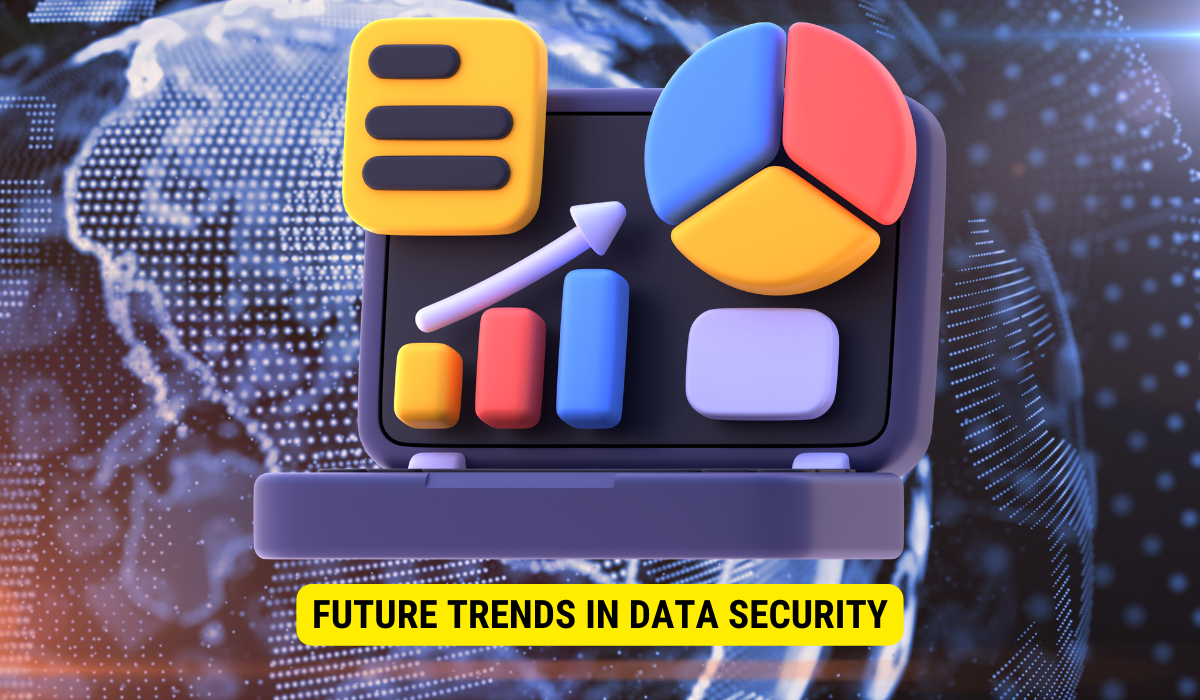Securing data, whether in motion (data being transmitted) or at rest (data stored on a device), is essential to prevent unauthorized access. This involves utilizing encryption, access controls, various security techniques, policies, and tools to ensure data confidentiality, integrity, and availability.
In today’s digital age, data security is of utmost importance. Establishments and individuals must take proactive measures to secure their data in motion and at rest. Understanding the basics of data security is important for implementing effective strategies. Together, we will discover the position of data security, key concepts in data security, techniques for securing data in motion, techniques for securing data at rest, implementing a comprehensive data security strategy, and future trends in data security.
Understanding Data Security
Before delving into the specifics of securing data in motion and at rest, it is crucial to understand the importance of data security. Data security is the protective measures to safeguard data from unauthorized access, use, disclosure, disruption, modification, or destruction. It confirms the confidentiality, integrity, and availability of data.
Effective data security measures provide peace of mind to businesses and individuals as they help prevent data breaches, unauthorized access, and potential financial and reputational damage. By safeguarding sensitive information, data security promotes trust and improves the overall security posture of an organization.
The Importance of Data Security
Data security plays a vital role in today’s interconnected world. With the proliferation of digital platforms, the amount of data generated and transmitted continues to escalate. From personal information such as names, addresses, and social security numbers to sensitive corporate data like intellectual property and financial records, data is a valuable asset that must be protected.
Data security breaches can have severe consequences, including financial loss, legal liabilities, and damage to brand reputation. Additionally, compliance with data protection regulations has become a top priority for organizations worldwide. Therefore, understanding and implementing robust data security measures is essential for safeguarding sensitive information.
Key Concepts in Data Security
Regarding data security, several key concepts lay the foundation for effective protection. These concepts include:
- Confidentiality: Ensuring that only authorized individuals or entities have access to data.
- Integrity: Safeguarding data’s accuracy, reliability, and authenticity throughout its lifecycle.
- Availability: Ensuring data is accessible and usable when needed while mitigating the risk of downtime or data loss.
- Authentication: Confirming the identity of users and ensuring that only authorized individuals can access data.
- Encryption: Transforming data into an unreadable format using cryptographic algorithms, making it indecipherable to unauthorized users.
- Access Control: Implementing mechanisms to control and restrict entree to data and resources based on user privileges and roles.
- Auditability: Monitoring and logging data access, modifications, and other security events to detect and investigate potential breaches.
A thorough understanding of these key concepts is crucial when devising data security strategies. By incorporating these principles into practice, organizations can enhance the overall security of their data.
Securing Data in Motion
Data in motion refers to data transmitted between devices or networks. Examples include emails, file transfers, and real-time communication via messaging applications. Protecting data in motion is critical, as it is vulnerable to interception or modification by unauthorized parties.
What is Data in Motion?
Data in motion can take various forms, such as network traffic, digital communications, or information transmitted over the Internet. Identifying and understanding the types of data in motion within an organization is essential to implement appropriate security measures.
Techniques for Securing Data in Motion
Securing data in motion involves several techniques:
- Encryption: One of the most effective measures to protect data in motion is through encryption. By encrypting data, it becomes unreadable to unauthorized individuals. Secure protocols such as Transport Layer Security (TLS) and Secure Shell (SSH) provide encryption mechanisms for various types of data transmission.
- Virtual Private Networks (VPNs): VPNs create a secure, encrypted tunnel over public networks, ensuring the confidentiality of data in motion. Organizations can leverage VPNs to establish secure connections between geographically dispersed locations or remote workers.
Implementing and configuring firewalls and Intrusion Detection Systems (IDS) also aid in securing data in motion. Firewalls monitor and control network traffic, while IDS helps detect and respond to potential threats.
Common Challenges in Securing Data in Motion
Securing data in motion is not without its challenges. Some common challenges include:
- Interoperability: Different devices, platforms, and systems may have varying encryption standards and protocols, which can create compatibility issues.
- Bandwidth limitations: Encrypting large volumes of data in real time can consume significant bandwidth, impacting network performance.
- Key management: Ensuring secure key distribution and management is crucial for effective encryption. Poor key management practices can compromise the security of data in motion.
- Attack vectors: Sophisticated attackers continually evolve their methods to intercept or manipulate data in motion. Staying updated with the latest security practices is necessary to combat these threats.
Despite these challenges, a robust data security strategy helps mitigate risks and safeguard data during transmission.
Securing Data at Rest
Data at rest mentions to data stored on physical or digital storage devices, such as hard drives, databases, or cloud storage. Protecting data at rest is essential, as unauthorized access to these devices can result in data leakage or misuse.
What is Data at Rest?
Data at rest encompasses a wide range of information, including databases, files, backups, and archives. Organizations must identify and prioritize the types of data at rest they possess to implement suitable security measures.
Techniques for Securing Data at Rest
Several techniques can help secure data at rest:
- Encryption: Encrypting data at rest ensures that the data remains unintelligible even if the storage device is compromised. Full disk, file-level, and database encryption are common methods used to secure data at rest.
- Access Control: Implementing robust access controls, such as user authentication and authorization mechanisms, prevents unauthorized access to data at rest. Role-based access control (RBAC) and other access management systems help enforce secure access policies.
- Physical Security: Protecting physical storage devices from theft, damage, or unauthorized access is crucial. Secure data centers, surveillance systems, and restricted access areas enhance data security.
Common Challenges in Securing Data at Rest
Securing data at rest comes with its own set of challenges:
- Key Management: Proper key management is critical for data-at-rest encryption. Safeguarding encryption keys and ensuring secure key distribution and storage is essential.
- Performance Impact: Encrypting and decrypting large volumes of data can impact system performance and increase storage requirements. Balancing security needs with performance considerations is crucial.
- Data Resilience: Implementing robust backup and disaster recovery strategies helps ensure the availability and integrity of data at rest. Regular backups, redundancy, and testing recovery procedures contribute to data resilience.
- Third-Party Risk: When using third-party storage solutions or cloud services, organizations must assess the security measures to protect their data. Performing due diligence and contractual agreements helps mitigate third-party risks.
Overcoming these challenges needs a combination of technical measures, policies, and ongoing risk assessments to secure data throughout its lifecycle.
Implementing a Comprehensive Data Security Strategy
Organizations must develop a comprehensive data security strategy to ensure effective data security. This strategy involves multiple steps and considerations to mitigate risks and protect data. The following steps can guide the development of a data security strategy:
Steps to Create a Data Security Strategy
- Identify and Classify Data: Understand the types of data your organization handles and classify them based on sensitivity and regulatory requirements.
- Assess Risks: Conduct a comprehensive risk valuation to identify potential threats and vulnerabilities that could jeopardize data security.
- Develop Policies and Guidelines: Create data security policies, guidelines, and procedures tailored to your organization’s needs. These should include measures for data encryption, access control, incident response, and employee training.
- Implement Technical Controls: Deploy a combination of technical controls such as firewalls, encryption systems, intrusion detection systems, and access management solutions to protect data.
- Educate and Train Employees: Raise awareness among employees about data security best practices through training programs. Regularly educate employees on emerging threats and reinforce compliance with data security policies.
Maintaining and Updating Your Data Security Strategy
A data security strategy is not a one-time effort. It requires regular maintenance and updates to address evolving threats and changing business requirements. Organizations should periodically reassess risks, test security controls, and update policies and procedures based on new insights or industry best practices.
Future Trends in Data Security
Data security is an ever-evolving field driven by technological advancements and the persistent nature of cyber threats. To stay ahead of emerging risks, organizations must be aware of future trends and technologies in data security.
Emerging Technologies for Data Security
Several emerging technologies show promise in strengthening data security:
- Blockchain: Known for its application in cryptocurrencies, blockchain technology establishes a decentralized and tamper-proof record of transactions, enhancing data integrity and security.
- Homomorphic Encryption: This encryption method allows computation on encrypted data, enabling secure processing while maintaining data privacy.
- Tokenization: Tokenization replaces sensitive data with unique tokens, reducing the risk of data exposure in case of a breach.
- Secure Multiparty Computation (MPC): MPC enables multiple parties to collaborate on computations without revealing their individual data inputs, protecting privacy while allowing for secure data analysis.
The Role of AI and Machine Learning in Data Security

Artificial Intelligence (AI) and Machine Learning (ML) are increasingly leveraged to enhance data security:
- Anomaly Detection: AI-powered anomaly detection systems analyze patterns and behaviors to detect abnormal activities that might indicate a security breach.
- Behavioral Biometrics: Machine Learning algorithms can identify unique behavioral patterns and biometric characteristics, providing advanced authentication mechanisms.
- Automated Threat Hunting: AI and ML algorithms can help proactively identify potential threats by analyzing vast amounts of data and identifying trends, patterns, and indicators of compromise.
- Adaptive Cybersecurity: AI-driven cybersecurity systems can continuously learn and adapt to emerging threats, offering real-time protection against evolving attack vectors.
As organizations embrace these technologies, it is imperative to understand their limitations and continually evaluate the effectiveness of AI and ML solutions in securing data.
Key Takeaways
- Data security ensures the protection of sensitive information when it’s being transmitted or stored on a device.
- For data in motion, encryption like TLS or VPNs can safeguard the data during transmission.
- Techniques like full disk encryption, access control, and physical security measures are crucial when protecting data at rest.
- Evolving technologies such as blockchain, AI, and machine learning offer new avenues to enhance traditional security measures.
- A holistic data security strategy must be adaptive, regularly updated, and consider both present needs and future technological trends.
FAQs
What does securing data in motion mean?
Securing data in motion involves protecting data as it’s transmitted between systems, networks, or devices, ensuring it’s not intercepted or altered during transmission.
How is data at rest different from data in motion?
Data at rest is stored on physical or digital devices like hard drives or databases. In contrast, data in motion pertains to data transferred between devices or over networks.
What are the key concepts in data security?
The key concepts include confidentiality, integrity, availability, authentication, encryption, access control, and auditability.
Which technologies are emerging as potential game-changers in data security?
Technologies like blockchain, homomorphic encryption, tokenization, and Secure Multiparty Computation (MPC) are gaining traction for enhancing data security.
How do AI and Machine Learning influence data security?
AI and Machine Learning enhance data security through anomaly detection, behavioral biometrics, automated threat hunting, and adaptive cybersecurity systems.
Conclusion
In conclusion, securing data in motion and at rest is critical to data security. Organizations can protect their sensitive info from unauthorized access or misuse by understanding the importance of data security, key concepts, and implementing relevant techniques. A comprehensive data security strategy, supported by ongoing risk assessments, employee training, and the adoption of emerging technologies, is essential to stay ahead of evolving threats and uphold data integrity, confidentiality, and availability.
